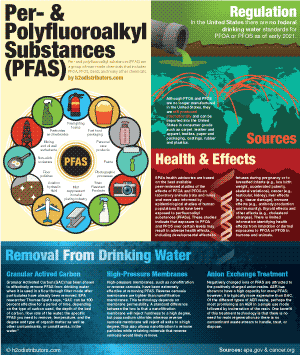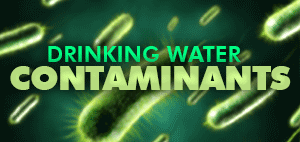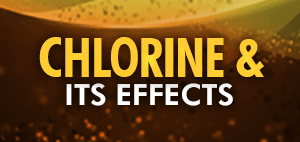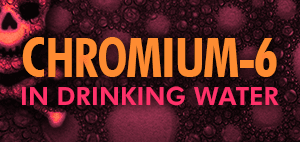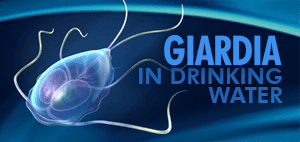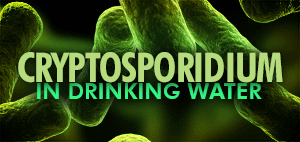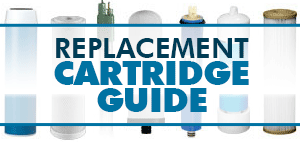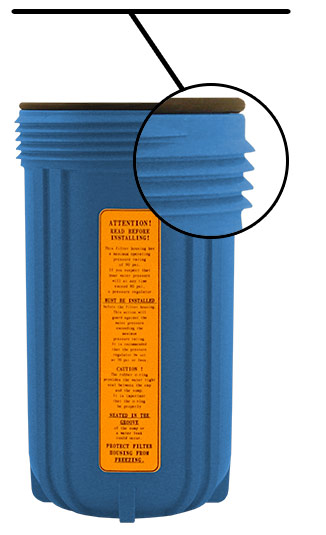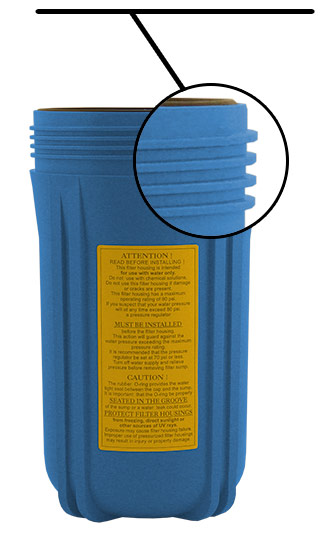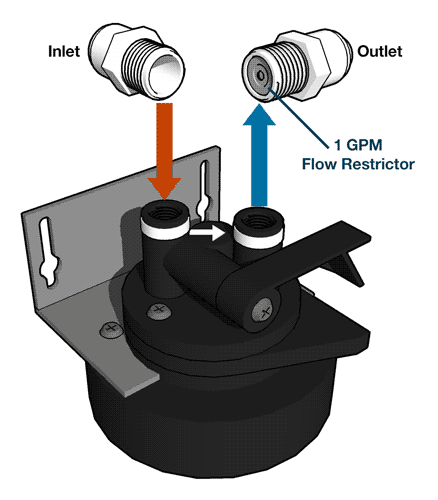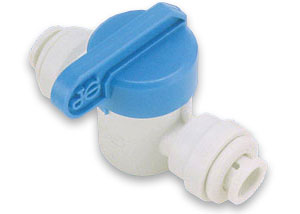What are PFAs and Why Are They in My Water?
Per- and polyfluoroalkyl substances (PFAS) are a group of man-made chemicals that includes PFOA, PFOS, GenX, and many other chemicals. PFAS have been manufactured and used in a variety of industries around the globe, including in the United States since the 1940s. PFOA and PFOS have been the most extensively produced and studied of these chemicals. Both chemicals are very persistent in the environment and in the human body – meaning they don’t break down and they can accumulate over time. There is evidence that exposure to PFAS can lead to adverse human health effects.

PFAS can be found in:
- Food packaged in PFAS-containing materials, processed with equipment that used PFAS, or grown in PFAS-contaminated soil or water.
- Commercial household products, including stain- and water-repellent fabrics, nonstick products (e.g., Teflon), polishes, waxes, paints, cleaning products, and fire-fighting foams (a major source of groundwater contamination at airports and military bases where firefighting training occurs).
- Workplace, including production facilities or industries (e.g., chrome plating, electronics manufacturing or oil recovery) that use PFAS.
- Drinking water, typically localized and associated with a specific facility (e.g., manufacturer, landfill, wastewater treatment plant, firefighter training facility).
- Living organisms, including fish, animals and humans, where PFAS have the ability to build up and persist over time.
Certain PFAS chemicals are no longer manufactured in the United States as a result of phase outs including the PFOA Stewardship Program in which eight major chemical manufacturers agreed to eliminate the use of PFOA and PFOA-related chemicals in their products and as emissions from their facilities. Although PFOA and PFOS are no longer manufactured in the United States, they are still produced internationally and can be imported into the United States in consumer goods such as carpet, leather and apparel, textiles, paper and packaging, coatings, rubber and plastics.
What are the Health Effects of PFA Exposure?
EPA’s health advisories are based on the best available peer-reviewed studies of the effects of PFOA and PFOS on laboratory animals (rats and mice) and were also informed by epidemiological studies of human populations that have been exposed to perfluoroalkyl substances (PFASs). These studies indicate that exposure to PFOA and PFOS over certain levels may result in adverse health effects, including developmental effects to fetuses during pregnancy or to breastfed infants (e.g., low birth weight, accelerated puberty, skeletal variations), cancer (e.g., testicular, kidney), liver effects (e.g., tissue damage), immune effects (e.g., antibody production and immunity), thyroid effects and other effects (e.g., cholesterol changes). There is limited information identifying health effects from inhalation or dermal exposures to PFOA or PFOS in humans and animals.

At least 45% of the nation’s tap water could be contaminated with at least one form of PFAS known as “forever chemicals,” according to a study released by the U.S. Geological Survey in July, 2023.
A nine-month investigation by the Guardian and Consumer Reports found alarming levels of forever chemicals, arsenic and lead in samples taken across the US
Consumer Reports and the Guardian selected 120 people from around the US, out of a pool of more than 6,000 volunteers, to test for arsenic, lead, PFAS (per- and polyfluoroalkyl substances), and other contaminants. The samples came from water systems that together service more than 19 million people.
A total of 118 of the 120 samples had concerning levels of PFAS or arsenic above CR’s recommended maximum, or detectable amounts of lead. Testing of the samples showed that more than 35% of the samples had PFAS, potentially toxic “forever chemicals”, at levels above CR’s recommended maximum.
In February of 2022, scientists estimated that humans are putting approximately 50,000 tons of PFAS chemicals into the atmosphere every year. In a more recent study it was found that rainwater everywhere on Earth is unsafe to drink due to the ubiquity of PFAS present. Even in Antarctica and on the Tibetan plateau, two of the most remote regions on Earth, PFAS have been detected.
Interactive Map – PFAS Contamination in the U.S.
(Environmental Working Group)
PFAs Removal From Drinking Water
Activated carbon treatment is the most studied treatment for PFAS removal. Activated carbon is commonly used to adsorb natural organic compounds, taste and odor compounds, and synthetic organic chemicals in drinking water treatment systems. Adsorption is both the physical and chemical process of accumulating a substance, such as PFAS, at the interface between liquid and solids phases. Activated carbon is an effective adsorbent because it is a highly porous material and provides a large surface area to which contaminants may adsorb. Activated carbon (GAC) is made from organic materials with high carbon contents such as wood, lignite, and coal; and is often used in granular form called granular activated carbon (GAC).
Granular Activated Carbon (GAC) has been shown to effectively remove PFAS from drinking water when it is used in a flow through filter mode after particulates have already been removed. EPA researcher Thomas Speth says, “GAC can be 100 percent effective for a period of time, depending on the type of carbon used, the depth of the bed of carbon, flow rate of the water, the specific PFAS you need to remove, temperature, and the degree and type of organic matter as well as other contaminants, or constituents, in the water.”
Another treatment option is anion exchange treatment, or resins. Ion exchange resins are made up of highly porous, polymeric material that is acid, base, and water insoluble. The tiny beads that make up the resin are made from hydrocarbons. There are two broad categories of ion exchange resins: cationic and anionic. The negatively charged cationic exchange resins (CER) are effective for removing positively-charged contaminants and positively charged anion exchange resins (AER) are effective for removing negatively charged contaminants, like PFAS. Ion exchange resins are like tiny powerful magnets that attract and hold the contaminated materials from passing through the water system. Negatively charged ions of PFAS are attracted to the positively charged anion resins. AER has shown to have a high capacity for many PFAS; however, it is typically more expensive than GAC. Of the different types of AER resins, perhaps the most promising is an AER in a single use mode followed by incineration of the resin. One benefit of this treatment technology is that there is no need for resin regeneration so there is no contaminant waste stream to handle, treat, or dispose.
High-pressure membranes, such as nanofiltration or reverse osmosis, have been extremely effective at removing PFAS. Reverse osmosis membranes are tighter than nanofiltration membranes. This technology depends on membrane permeability. A standard difference between the two is that a nanofiltration membrane will reject hardness to a high degree, but pass sodium chloride; whereas reverse osmosis membrane will reject all salts to a high degree. This also allows nanofiltration to remove particles while retaining minerals that reverse osmosis would likely remove.
Reverse Osmosis Water Filters Under Sink Water Filters Countertop Water Filters Whole House Water Filters Everpure Systems and Cartridges Carbon Block Cartridges Granular Activated Carbon Cartridges Aries Filter Works Specialty Cartridges
From NSF.org
NSF/ANSI Standard 53: Drinking Water Treatment Units – Health Effects
Overview: Standard 53 addresses point-of-use (POU) and point-of-entry (POE) systems designed to reduce specific health-related contaminants, such as Cryptosporidium, Giardia, lead, volatile organic chemicals (VOCs), MTBE (methyl tertiary-butyl ether), that may be present in public or private drinking water.
NSF/ANSI Standard 58: Reverse Osmosis Drinking Water Treatment Systems
Overview: This standard was developed for point-of-use (POU) reverse osmosis (RO) treatment systems. These systems typically consist of a pre-filter, RO membrane, and post-filter. Standard 58 includes contaminant reduction claims commonly treated using RO, including fluoride, hexavalent and trivalent chromium, total dissolved solids, nitrates, etc. that may be present in public or private drinking water.
Sources of Information on PFAs
- EPA – Per- and Polyfluoroalkyl Substances (PFAS)
- EPA – Proposal to List Nine Per- and Polyfluoroalkyl Compounds as Resource Conservation and Recovery Act Hazardous Constituents
- Cancer.org
- Wikipedia – Perfluorooctanoic Acid
The foregoing information was compiled from the the links listed above.

